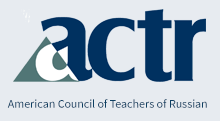Russian Language Journal
Keywords
Bachelor's degrees, Russian language and literature, gender distribution, ethnoracial distribution
Abstract
This article is a report on the gender and race or ethnicity of students who earned bachelor’s degrees in Russian language and literature in the United States over a twenty-year period, from 1999–2000 to 2018–2019, as either a first or second major (N = 9,161). This study complements national data available through organizations such as the American Academy of Arts and Sciences, which, through the Humanities Indicators project (http://www.humanitiesindicators.org), publishes information on the gender and ethnoracial distribution of bachelor’s degrees in languages other than English (LOTEs) together but not for individual languages (American Academy of Arts and Sciences, n.d.). This study also complements reports from the Modern Language Association (MLA), which surveys U.S. postsecondary institutions to obtain data on enrollments in courses in LOTEs but does not collect information on the demographic profiles of the students enrolled in those courses (Looney and Lusin 2019). This article also extends the work of Murphy and Lee (2019), who reported on the gender and race or ethnicity of U.S. bachelor’s degree recipients in fifty individual programs in LOTEs—including Russian—over a four-year period, from 2009–2010 to 2013–2014. Murphy and Lee (2019, 56) found that of the top ten language programs in the United States in terms of the number of bachelor’s degrees conferred in 2010–2014, Russian had the smallest proportion—an average of just 0.9 percent per year—of Black or African American graduates. That percentage represents a shockingly small number of students: only seventeen Black or African American women and just three Black or African American men earned bachelor’s degrees in Russian in the United States in the four-year period from 2009–2010 to 2013–2014 (Murphy and Lee 2019, 91).
Recommended Citation
Murphy, Dianna and Ghaedi, Hadis
(2021)
"Who Are(n’t) Our Students? The Gender and Ethnoracial Distribution of U.S. Bachelor’s Degrees in Russian Language and Literature over Twenty Years, from 1999–2000 to 2018–2019,"
Russian Language Journal: Vol. 71:
Iss.
3, Article 2.
DOI: https://doi.org/10.26067/qqbb-9486
Available at:
https://scholarsarchive.byu.edu/rlj/vol71/iss3/2

